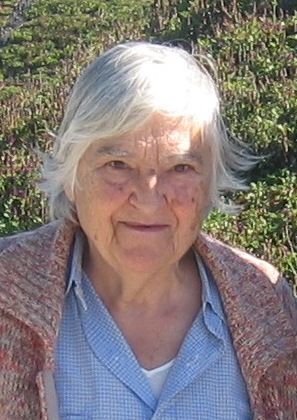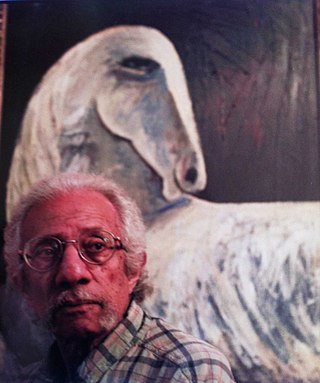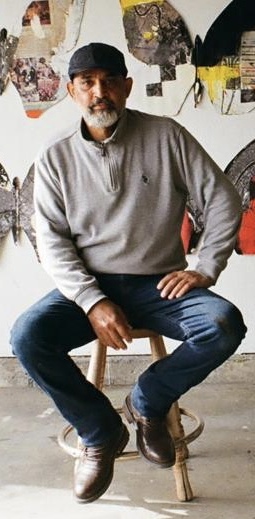Related Research Articles

The music of Iraq or Iraqi music,, also known as the music of Mesopotamia, encompasses the music of a number of ethnic groups and musical genres. Ethnically, it includes Mesopotamian Arabic, Assyrian, Kurdish and the music of Turkmen, among others. Apart from the traditional music of these peoples, Iraqi music includes contemporary music styles such as pop, rock, soul and urban contemporary.

Jawad Saleem was an Iraqi painter and sculptor born in Ankara, Ottoman Empire in 1919. He became an influential artist through his involvement with the Iraqi Baghdad Modern Art Group, which encouraged artists to explore techniques that combined both Arab heritage and modern art forms. He is considered to be one of Iraq's greatest 20th-century sculptors.

Suad al-Attar is an Iraqi painter whose work is in private and public collections worldwide, including The British Museum and the Gulbenkian Collection. She has held over twenty solo exhibitions, including one in Baghdad that became the first solo exhibition in the country's history for a woman artist. Her many awards include the first prize at the International Biennale in Cairo in 1984 and an award of distinction at the Biennale held in Malta in 1995.

Etel Adnan was a Lebanese-American poet, essayist, and visual artist. In 2003, Adnan was named "arguably the most celebrated and accomplished Arab American author writing today" by the academic journal MELUS: Multi-Ethnic Literature of the United States.

Ismail Fatah Al-Turk was an Iraqi painter and sculptor born in Basra, Iraq, noted for his abstract art, monumental sculpture, and public works and as part of the Baghdad Modern Art Group, which fostered a sense of national identity. His monument, al-Shaheed Monument is the most iconic public monument in Baghdad.
Jananne Al-Ani is an Irish-Iraqi artist.
Jaber Alwan is an Italian artist and painter of Iraqi descent.
Hayv Kahraman is an Iraqi-American-Swedish artist of Kurdish descent, who was born in Baghdad and fled to Sweden with family during the Gulf War, studied in Florence, and is currently based in Los Angeles. She is primarily a painter.
Wasma'a Khalid Chorbachi is an American-Iraqi artist.

Ahmed Morsi is an Egyptian artist, art critic and poet.
Hanaa Malallah is an Iraqi artist and educator living in London, England. Her surname also appears in English as Mal-Allah. She is noted for developing the technique called the Ruins Technique in which found objects are incorporated into artwork.

Dia Al-Azzawi is an Iraqi painter and sculptor, who lives and works in London. He is one of the pioneers of modern Arab art and is noted for incorporating Arabic script into his paintings. Active in the arts community, he founded the Iraqi art group known as New Vision and has been an inspiration to a generation of young, calligraffiti artists.

Mahmoud Obaidi is an Iraqi-Canadian artist whose work has been exhibited in museums and galleries around the world.

Iraqi art is one of the richest art heritages in world and refers to all works of visual art originating from the geographical region of what is present day Iraq since ancient Mesopotamian periods. For centuries, the capital, Baghdad was the Medieval centre of the literary and artistic Arab world during the Abbasid Caliphate, in which Baghdad was the capital, but its artistic traditions suffered at the hands of the Mongol invaders in the 13th century. During other periods it has flourished, such as during the reign of Pir Budaq, or under Ottoman rule in the 16th century when Baghdad was known for its Ottoman miniature painting. In the 20th century, an art revival, which combined both tradition and modern techniques, produced many notable poets, painters and sculptors who contributed to the inventory of public artworks, especially in Baghdad. These artists are highly regarded in the Middle East, and some have earned international recognition. The Iraqi modern art movement had a profound influence on pan-Arab art generally.
The Hurufiyya movement (Arabic: حروفية ḥurūfiyyah adjectival form ḥurūfī, 'of letters' is an aesthetic movement that emerged in the second half of the twentieth century amongst artists from Muslim countries, who used their understanding of traditional Islamic calligraphy within the precepts of modern art. By combining tradition and modernity, these artists worked towards developing a culture-specific visual language, which instilled a sense of national identity in their respective nation-states when many of these states were shaking off colonial rule and asserting their independence. They adopted the same name as the Hurufi, an approach of Persian Sufism which emerged in the late 14th–early 15th century. Art historian Sandra Dagher has described Hurufiyya as the most important movement to emerge in Arabic art in the 20th century.
Rafa al-Nasiri was an Iraqi painter, draughtsman, print-maker, educator and author whose works with a social and political message resonated with the Iraqi public in the mid-20th century. He was also very influential in encouraging young artists to take up print-making.
Walid Siti is a Kurdish painter and artist. He is currently based in London, United Kingdom.
May Muzaffar is a Jordan-based Iraqi poet, short story writer, translator, and editor.

Ghassan Ghaib is an Iraqi-American artist.
References
Lloyd, Fran (1999). Contemporary Arab Women's Art: Dialogues of the present. London: WAL Women's Art Library. ISBN 1860645992.